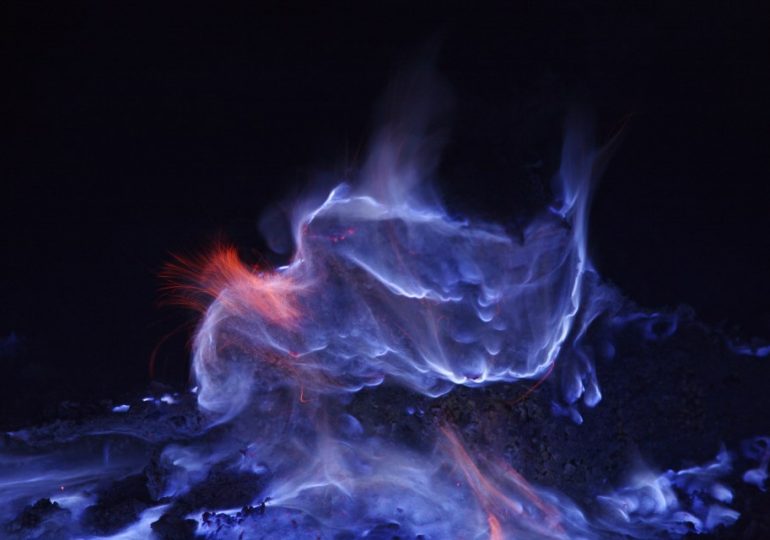A DEADLY volcano that spits bright blue lava contains the world’s largest acid lake – capable of melting human skin.
Kawah Ijen, is a gargantuan volcano on the island of Java, Indonesia, with its lake water’s pH similar to that of battery acid.
GettyThe blue flames erupt from the volcano[/caption]
GettyIjen volcano crater lake in Indonesia[/caption]
GettySteep slopes of the Ijen volcano crater are covered in yellow solidified sulphur[/caption]
The Ijen volcano complex is a group of composite volcanoes in the stunning Banyuwangi Regency of East Java, Indonesia.
It is inside a larger caldera Ijen, which is around a whopping 12 miles wide.
It has become a hugely popular tourist attraction due to its incredible blue flames it spits – but has led to numerous deaths.
One tourist tragically died at the site in April.
The 31-year-old Chinese woman was trying to get the best angle to capture the breathtaking scenery – but tragically plunged 75 metres to her death.
She and her husband had gone to see the stunning views and experience the famous Blue Fire phenomenon – but the excursion ended in horror.
Similar tragedies have occurred at the site over the years – many of which have been along the climbing route.
BLUE FIRE
When the gases ignite above the Kawah Ijen volcano, the unbelievable blue flames erupt.
The flames can be up to 16-foot high when some of the gas condenses to liquid while still ignited.
It is the largest blue flame area in the world and local people refer to it as Blue Fire.
GettyAerial view of Misty Volcano of Kawah Ijen crater[/caption]
GettyBlue sulphur flames at the volcano site[/caption]
GettyTraveler taking a photography on the cliff of Kawah Ijen volcano, Indonesia[/caption]
GettyThe vast majority of miners do not wear a gas mask at the site[/caption]
The sulphur in these astonishing gases that produce the spectacle form a liquid after catching light, which flows along the volcano before solidifying into yellow deposits.
A two-hour hike is required to reach the rim of the crater followed by a 45-minute hike to the bank of the crater.
DEADLY LAKE
The volcano’s deadly lake, with its 0.3 pH, is capable of dissolving human skin instantly.
Despite this, it is home to a small community of microbes, studies suggest.
Just like the volcano’s flames, the Ijen’s crater lake’s blue-green colour is so bright you can see it from space.
This is due to the various minerals and acids in the crater – making it look artificial.
Rain regularly hits and replenishes Ijen’s acidic lake – but the new, fresh water immediately turns deadly due to vents that release gas constantly at the bottom of the lake.
When the crater becomes full, the skin-melting water overflows into a stream on the volcano’s west side.
This then feeds into the Banyupahit River basin.
The name of the river translates to “bitter water” in the Javanese language.
JOB HORROR
Kawah Ijen is also home to sulphur mines where miners risk their lives to extract precious sulphuric rock.
These are formed after the blue flames have gone out and the sulphur gas has cooled and combined with the lava to form solidified rock.
GettyWorker carrying the sulphur blocks in Kawa Ijen volcano[/caption]
GettyWorker carrying the sulphur blocks at the site[/caption]
GettyA worker carries sulphur blocks without wearing any face mask[/caption]
This is then used in the food and chemical industries involved in sugar refinery.
The companies use them to remove colour impurities from the sugar.
The miners carry rock-filled baskets by hand down the mountains which sell for around 680 Indonesia rupiahs per kilogram – the equivalent of about three pence.
GettyKawah Ijen is a popular tourist spot[/caption]
GettyHot sulphuric gases emerging from the surface of the crater burn an electric blue upon contact with the cold air[/caption]
Leave a comment








